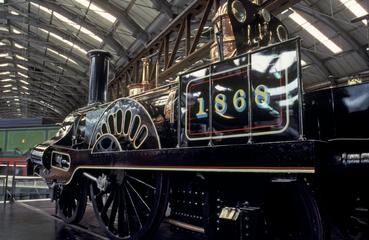
Alexander Allan 1809 - 1891
- Nationality:
- British
- born in:
- Montrose, Angus, Scotland, United Kingdom
Allan served an apprenticeship with a millwright, Gibbs, at Lochside. In 1832-33 he was at Stephenson's Newcastle works as an artisan, and then went to Forrester's new locomotive works at Liverpool. He then spent some 12 months in Ireland, between 1835 and 1836, working for Forrester, where he was in charge of the re-erection and preliminary running of locomotives supplied to the Dublin & Kingstown Railway; on his return he then became a foreman at the Forrester works. In February 1840 he was selected by Locke and Buddicom as foreman of the Edge Hill shops of the GJR and took up his duties in March. He oversaw the locomotive fitters at the Birmingham end of the line. He moved to Crewe in 1843, and though his official title to the end of his time on the GJR was chief foreman of locomotives he was in effect the works manager.
In September 1853 he took up the vacant locomotive superintendency of the Scottish Central Railway. During his time at the SCR he introduced Crewe-type passenger engines and other types of 0-4-2 goods engines. While on that railway he was allowed to act as consultant to the Inverness & Nairn Railway and to provide drawings and specifications for 2-2-2 and 2-4-0 Crewe-type engines for that railway and its successor, the Inverness & Aberdeen Junction.
When the SCR was absorbed into the Caledonian in 1865 no place was found for Allan. The next year he became manager of the Worcester Engine Works and held the position during the four years of that firm's locomotive-building activities. He went to Scarborough in 1872 and lived there until his death, acting from time to time as a consultant and making one or two inventions.
He was responsible for several railway inventions from 1847, but only his straight-link valve motion of 1855 had any commercial success. In the mid-1840s he evolved a balanced slide valve that was fitted to two LNWR engines, and according to F. W. Webb, writing many years later, the only reason for failure was the lack of rigidity of the valve chest cover. Allan was an original member of the Institution of Mechanical Engineers in 1847.
Maker of the steam locomotive and tender, Grand Junction Railway